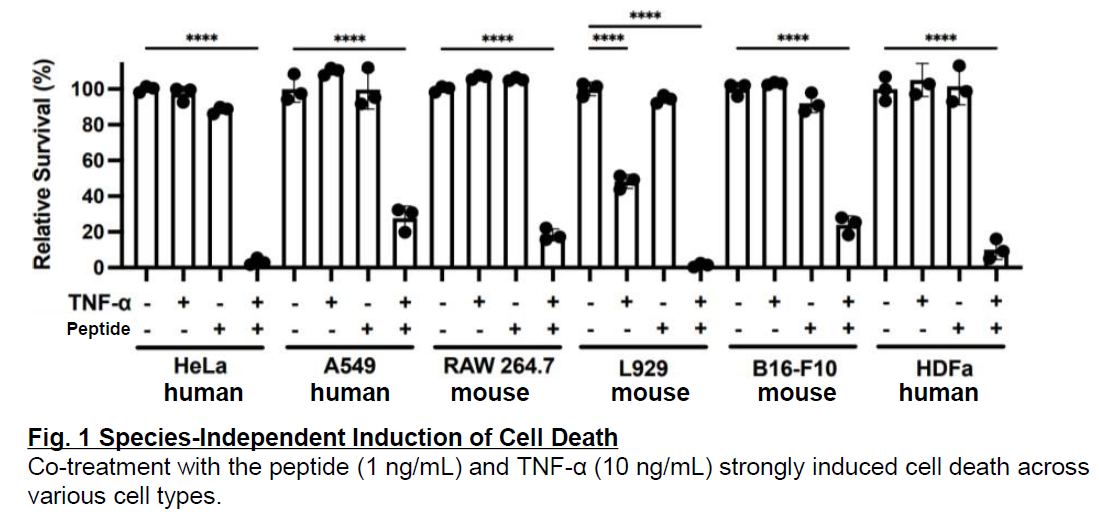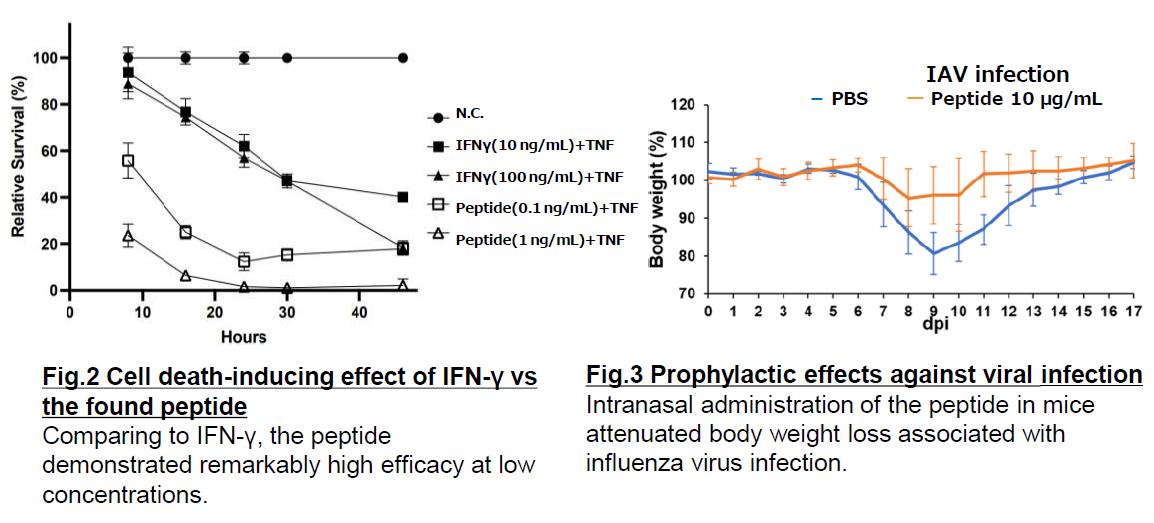Available Technologies
IFN-γ Mimetic Peptide
Leverages the immune-activating effects mediated through IFN-γ receptor for the treatment of cancer and the prevention of viral infection.
Background
Interferon-gamma (IFN-γ) is a glycoprotein composed of 143 amino acid residues and serves as a cytokine bridging innate and adaptive immune responses. It possesses antiviral properties and the ability to induce HLA expression and is already in clinical use for cancer treatment, among other indications. Recent studies have revealed that IFN-γ, in synergy with TNF-α, can strongly promote cell death. However, the high manufacturing cost of IFN-γ results in expensive therapies, and its pronounced species-specificity necessitates the development of individual IFN-γ products tailored to each animal species.
Description and Advantages
Kyoto University researchers have identified a virus-derived peptide composed of 20 amino acids that exerts effects like IFN-γ. This peptide can be easily synthesized chemically and induces robust, species-independent cell death synergistically with TNF-α in both humanand murine-derived cells (Fig.1). In addition, the peptide demonstrates its effects at lower concentrations compared to IFN-γ (Fig.2). Moreover, intranasal administration of this peptide to mice effectively prevented viral infection (Fig.3).
⮚ Facile Chemical Synthesis
Easily synthesizable peptide contributes to cost reduction both in development and manufacturing.
⮚ Species-Independent Effect
The peptide shows efficacy without species specificity thus is applicable for various applications.
⮚ Superior Efficacy Compared to IFN-γ
The peptide is high effective even at low concentrations.


| Development Status |
➢ Validated in-vitro that coadministration with TNF-α induced cell death in human cancer cells. ➢ Confirmed the prophylactic effects against viral infections in mice. Technology Readiness Level (TRL): Level 3 |
|---|---|
| Offer | • Patent License • Collaborative Research • MTA for evaluation |
| Related Links | View PDFView in Japanese |
Have you found what you were looking for?
- Interested in a particular research activity
- Cannot find the information
- Have questions on how to utilize research results
Feel free to contact us and get answers to your questions.
Inquiry- TLO-KYOTO
- Available Technologies
- IFN-γ Mimetic Peptide
3rd Floor, International Science
Innovation Building, Kyoto University
Yoshidahonmachi, Sakyo-ku, Kyoto
606-8501 JAPAN


